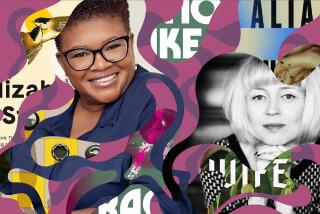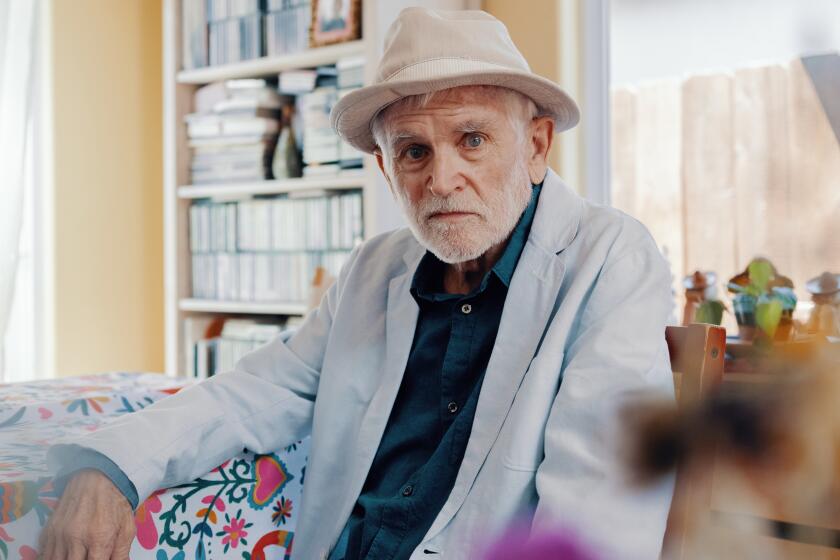A truth-teller’s literary lessons
- Share via
Starting with her 1977 book, “Art in the Court of the Blue Fag,” Coleman has produced a body of work -- poetry, novels, memoir, criticism and journalism -- that has moved more than one observer to dub her “the unofficial poet laureate of Los Angeles.” She has been praised both as a black writer and an L.A. writer, but her aspirations and her achievements transcend such labels.
“Like Wallace Stegner,” she writes in her new book, “The Riot Inside Me,” “I am in the ‘universal’ tradition of writers who concern themselves with The Truth -- never mind that it is apt to hurt someone, in some way, most likely me.”
Coleman picks up where she left off in her 1996 book, “Native in a Strange Land: Trials & Tremors.” Each is a rich, provocative and illuminating collection of diary excerpts, letters, poetry, essays, reviews and “visitations,” as Coleman calls them, a mosaic whose oddly shaped fragments fit together into a sweeping, wholly coherent literary autobiography.
In her latest book, for example, the short chapter “Jabberwocky Baby” is a reverie on Coleman’s literary roots. She was informed and inspired by an astounding range of reading material: Shakespeare, Roget’s Thesaurus, her father’s stash of back issues of Esquire, Knight and Playboy, as well as a cherished copy of “Heidi,” which she “reread in desperation until I could quote chunks of the text, mentally squeezing it for what I imagined to be hidden underneath.” And she reveals that an illustrated one-volume edition of “Alice’s Adventures in Wonderland” and “Through the Looking Glass,” a Christmas gift from a cousin, turned out to be the single most decisive influence on her poetry.
“Many have referred to Carroll’s rhymes as nonsense,” she writes, “but in my childhood world -- Los Angeles in the ‘50s -- they made perfect sense.”
Coleman, in fact, makes sense of some mind-boggling cultural juxtapositions in “The Riot Inside Me.” She claims both Nietzsche and W.E.B. Du Bois among her most crucial influences. Ophelia in “Hamlet” and Veronica in the “Archie” comic books are characters of compelling interest. She conjures up remarkable encounters with Charles Manson and Robert F. Kennedy. She invokes Wilson Pickett’s song “Mustang Sally” and Max Bruch’s “Kol Nidrei.” By the end of her lively, funny, affecting and yet often unsettling book, she has constructed both an intimate memoir and a sweeping political, cultural and social history of Southern California in the last half of the 20th century.
Race, class, gender and politics all strike sparks in Coleman’s life and work. But, appropriately enough, language -- “my delicious dilemma,” as she puts it -- is her fundamental concern. “I am glassed in by language as well as by the barriers of my dark skin and financial embarrassment,” she declares in “Primal Orb Density.” “Under these constraints I cannot reconcile myself with such dualities: Black/White, male/female, mother/daughter, child/adult, friend/lover, worker/artist, street/university, hard/soft, as they kaleidoscopically affect a whole.”
Coleman, a self-professed “poetry bigot, believing it the highest form of human dialogue,” explores the accidental encounters and alchemical processes that go into the making of a poet in “Dancer on a Blade.” She also celebrates the role of John Martin and his Black Sparrow Press (now an imprint of her current publisher, David R. Godine) in the making of more than one important poet, including Coleman. “After peaking at three thousand rejection slips by 1969, I had concluded that I was doing something very wrong no matter how closely I followed Writers’ Digest,” she tells us. “John Martin ... forced me to begin examining this problem....”
The liveliest and most revealing episode in “The Riot Inside Me” begins with a 2002 book review that Coleman wrote for the Los Angeles Times. “Until I panned Maya Angelou’s ‘A Song Flung Up to Heaven,’ ” she writes, “I was just one more poet and writer struggling on the cultural margins of The West, a contender for a spot in a dubious pantheon.” When Coleman dared to criticize the work of an iconic black writer as “a sloppily written fake,” she found herself “flung
“The Maya Situation,” as she calls it, turned out to be both an ordeal and a defining moment. “I was ... well versed in the forces governing the literary world -- its cabals, gamesters, grant gangsters, machers, and snipers -- and the fear,” she writes. “I had become uncomfortably aware of my place in it as labeled by others: ‘maverick,’ ‘outlaw,’ ‘street,’ or such contradictory terms as ‘avant-garde,’ ‘established,’ and ‘radical.’ ” But nothing quite prepared her for the backlash to her review, including the ugly moment when she learned that she was “no longer welcome” at L.A.’s celebrated African American bookstore, EsoWon Books.
For Coleman, however, the controversy was more than one of those writerly rivalries that flare up now and then in letters-to-the-editor columns. Indeed, “The Maya Situation” affords her an opportunity to affirm her own credo as a principled truth-seeker, a woman of conscience and an African American writer.
“As a writer who grew up in the 1950s and ‘60s, I still hear the strident words of those valiant Negro teachers who risked their livelihoods by keeping us after class, out of the earshot of Whites, to hammer these words into our psyches: ‘You have to be three times better than them just to stay even,” she writes. “Whenever I pick up a pen, sit before a monitor, or peck at a keyboard, I hear those voices and hold them dear. To hear them is to honor them.... “
“The Riot Inside Me” is Coleman’s way of honoring them too. *
More to Read
Sign up for our Book Club newsletter
Get the latest news, events and more from the Los Angeles Times Book Club, and help us get L.A. reading and talking.
You may occasionally receive promotional content from the Los Angeles Times.







